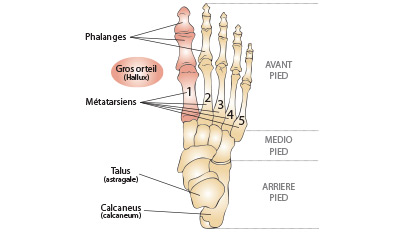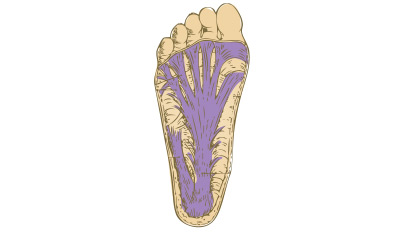or Morton Neuroma
What is Morton Syndrome or Morton Neuroma?
It is the formation of a small tumor of 4 to 8 mm of diameter of neurological origin, from an interdigital plantar nerve sitting in the metatarsal space. Of mechanical origin, the neuroma is favored by a tight footing, it is more frequent in the woman, it can regress spontaneously. It is in the third intermetatarsal space that one finds it in the 2/3 of the cases, if not it can exist at the level of the 2nd or 4th. It is bilateral at 20%.
Clinically, the patient complains of pains in the forefoot in the form of burning or throwing, sometimes in the form of an electric discharge in the plantar arch with difficulty in walking and / or running. The pain can be nocturnal and in some cases, accompanied by disorders of the sensitivity of the toes. A sign called Tinel and another sign of the bell are described. In fact, the pain is triggered by a maneuver of the examiner, that of the transverse tightening of the metatarsal heads.


Morton Syndrome:
Q & A
Are there any good causes?
We note a heredity in 1/3 of cases, it is difficult to say precisely the causes but, in addition to inheritance, we note diabetes, alcoholism, repeated micro-trauma, immobilizations following fractures, certain medications (Gardenal?) Among the favorable circumstances.
Is it necessary to take tests to confirm the diagnosis?
Yes, because the differential diagnosis is made with any other metatarsalgia: articular etiology with bursitis seen in the before anterior round foot, called inflammatory bursitis of a metatarsal head, the neuroma may be associated with a mechanical disorder, hence the interest of a complementary examination. Ultrasound or CT scan can confirm the diagnosis, but the best way is the MRI, because it also allows to appreciate the importance and the volume of the swelling.
How do you treat this disease?
Change of footwear. It is conservative and indicated in case of surgical failure.
- Medical: Insoles, NSAIDs, Analgesics, Corticoid infiltrations;
- Surgical: in the event of failure of the conservative treatment,
- In the open sky: dorsal or plantar way, it allows the excision of the neuroma with a good rate of cure;
Need to perform a biopsy?
No, the operation is indicated for functional reasons, to hinder walking, running and / or pain.
Activity stop or break?
One month, of which 3 weeks with shoe of discharge, time of the healing, maximum 6 to 8 weeks with resumption of the sport, 8 to 12 weeks after.
Complications ?
No, the operation is indicated for functional reasons, to hinder walking, running and / or pain.
Morton Syndorme: Terminology
Metatarsalgia: pain of the forefoot caused by a collapse of the anterior arch or by claws of the toes or MT heads plunging because relatively too long.
Sign of Tinel: pain in the form of an electric discharge, triggered during the mobilization of the toes or the palpation of the interosseous spaces.
Sign or maneuver of Mulder: If the toes are tightened transversely at the base, this leads to a sharp pain.
Infraclinical: ie the appearance of nodules and ropes without painful or functional signs or symptoms.
